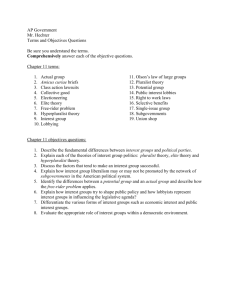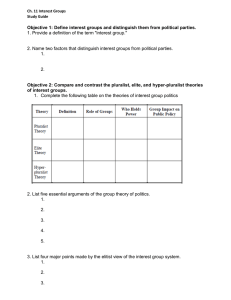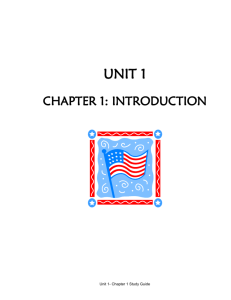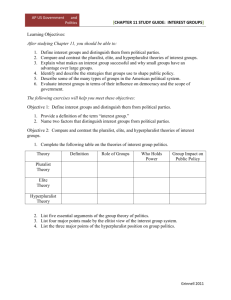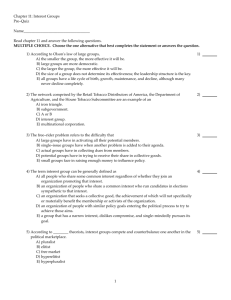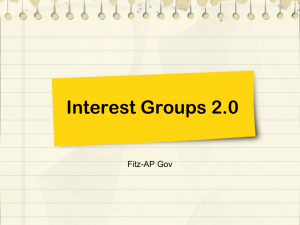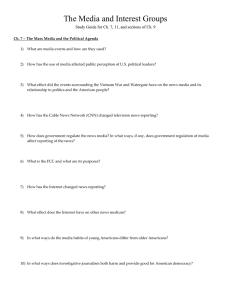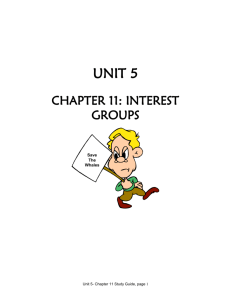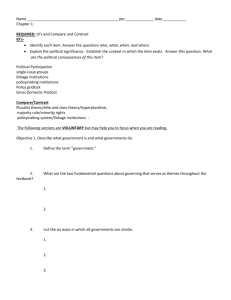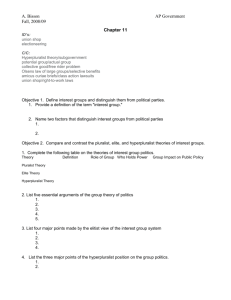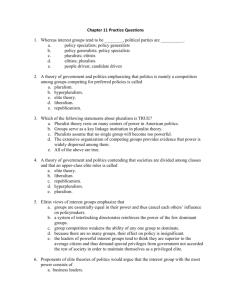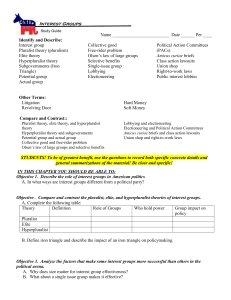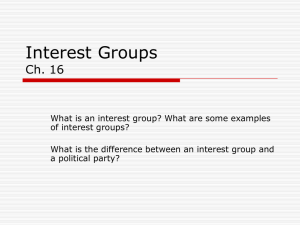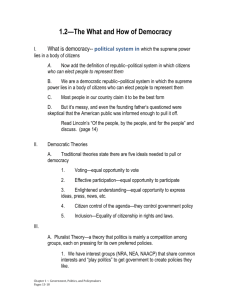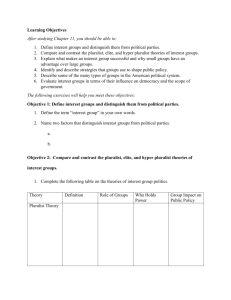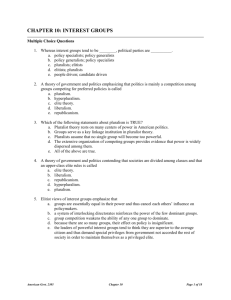Chapter 11: Interest Groups - Twyman
advertisement
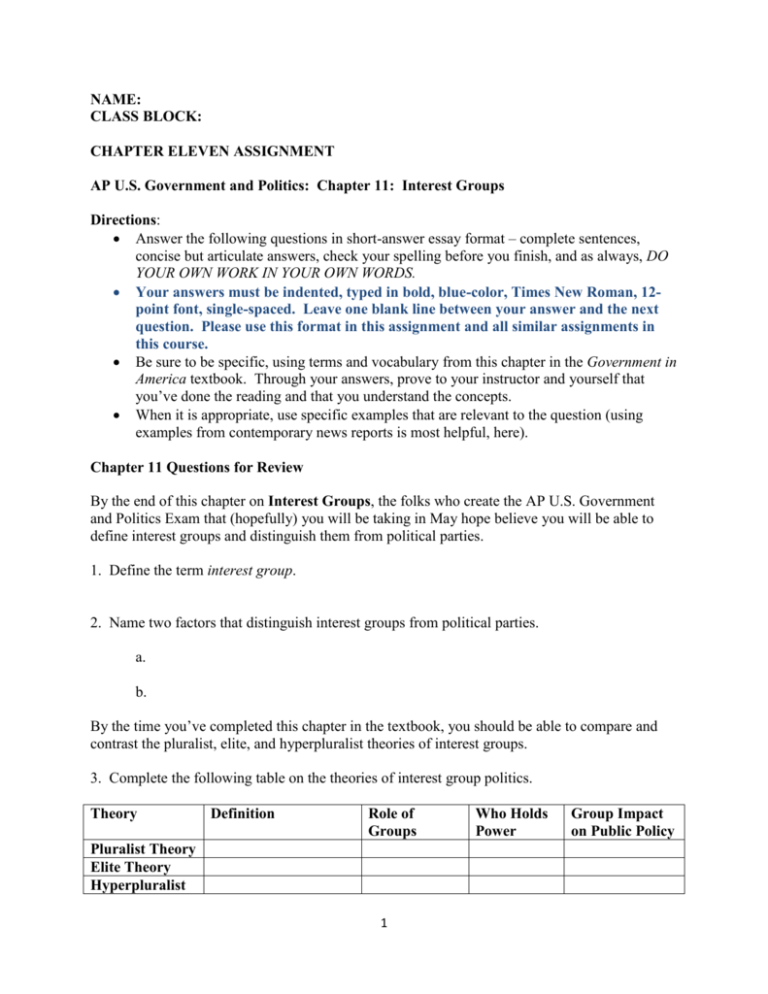
NAME: CLASS BLOCK: CHAPTER ELEVEN ASSIGNMENT AP U.S. Government and Politics: Chapter 11: Interest Groups Directions: Answer the following questions in short-answer essay format – complete sentences, concise but articulate answers, check your spelling before you finish, and as always, DO YOUR OWN WORK IN YOUR OWN WORDS. Your answers must be indented, typed in bold, blue-color, Times New Roman, 12point font, single-spaced. Leave one blank line between your answer and the next question. Please use this format in this assignment and all similar assignments in this course. Be sure to be specific, using terms and vocabulary from this chapter in the Government in America textbook. Through your answers, prove to your instructor and yourself that you’ve done the reading and that you understand the concepts. When it is appropriate, use specific examples that are relevant to the question (using examples from contemporary news reports is most helpful, here). Chapter 11 Questions for Review By the end of this chapter on Interest Groups, the folks who create the AP U.S. Government and Politics Exam that (hopefully) you will be taking in May hope believe you will be able to define interest groups and distinguish them from political parties. 1. Define the term interest group. 2. Name two factors that distinguish interest groups from political parties. a. b. By the time you’ve completed this chapter in the textbook, you should be able to compare and contrast the pluralist, elite, and hyperpluralist theories of interest groups. 3. Complete the following table on the theories of interest group politics. Theory Definition Role of Groups Pluralist Theory Elite Theory Hyperpluralist 1 Who Holds Power Group Impact on Public Policy Theory 4. List five essential arguments of the group theory of politics. a. b. c. d. e. 5. List four major points made by the elitist view of the interest group system. a. b. c. d. 6. List the three major points of the hyperpluralist position on group politics. a. b. c. At the end of your study of interest groups for this course, you ought to be able to explain what makes a group successful and why small groups have an advantage over large groups. 7. What is the difference between a potential group and an actual group? 8. What is Olson’s Law of Large Groups? 9. Define the term single-issue group, and give an example. A single-issue group is An example of a single-issue group is 2 By the end of your study of interest groups in American politics, students in APGovPol class must be able to identify and describe the strategies that groups use to shape public policy. 10. List the four general strategies used by interest groups to shape public policy. a. b. c. d. 11. What are the two basic types of lobbyists? a. b. 12. List four important ways lobbyists can help a member of Congress. a. b. c. d. 13. Why does PAC money go so overwhelmingly to incumbents? 14. What is an amicus curiae legal brief? Students in APGovPol need to be able to describe the types of interest groups in the American political system. 15. What was the main purpose of the Taft-Hartley Act? 15. What are the two main organizations that lobby for corporations and businesses? a. b. 3 16. What is meant by the term public interest lobby? 17. List three items environmental groups have promoted, and three items they have opposed. Promoted: a. b. c. Opposed: a. b. c. 18. Name two important organizations involved in promoting equality and summarize their major goals. a. b. Finally! Students in APGovPol will need to be able to evaluate interest groups in terms of their influence on democracy and the scope of government. 19. Summarize the pluralist, elitist, and hyperpluralist perspectives on interest groups and democracy. a. pluralist perspective – b. elitist perspective – c. hyperpluralist perspective – 4
